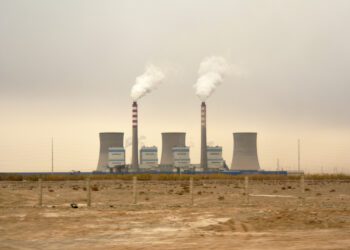Various forces are reshaping the future of industries and the oil and gas industry is no different. In a recent article, we explored some of these forces and their impact on the strategic imperatives of the oil and gas sector. The industry’s need to take charge and manage its carbon footprint has emerged as the most fundamental of these trends. In this article, we focus on ways to understand and minimize emissions.
Value of reducing emissions
Emission reduction generates vast societal benefits by directly tackling one aspect of climate change. And while reducing emissions can also be measured economically, a competitive portfolio can no longer be constructed by only considering a breakeven price, it must also include its carbon footprint. Many companies factor in this impact by adding a shadow price of carbon into project-level economics. It helps them optimize their portfolio for both direct economic returns as well as externalities on carbon intensity.
The drive towards low-carbon and low-cost is the industry paradigm and those who are able to achieve it will enjoy a competitive advantage. Surprisingly, Saudi Arabia produces oil with the world’s lowest carbon footprint.
Reducing own emissions
Businesses must first minimize their own emissions from production, processing and logistics: these are the so-called scope 1 and 2 emissions. An increasing number of companies have announced groundbreaking reduction targets for scopes 1 and 2. These include a range of actions led by individual companies as well as partnerships like the Oil & Gas Climate Initiative. Action can also be taken by leveraging principles of the sharing economy. Typically, these fall into the following types of categories:
- Eliminate methane leaks, flaring and venting.
- Scale up carbon capture usage and storage (CCUS) development and deployment.
- Switch fuel and improve energy efficiency of operations.
- Utilize lower-carbon feedstocks to offer low-carbon products.
- Collaborate across the supply chain.
- Build capacities to measure emissions granularly.
The opportunity is enormous, and it is possible to achieve a lot in a profitable way.
An Accenture analysis indicates that with a concerted effort from the oil and gas ecosystem to invest in scalable and profitable solutions, CO2 emissions could be reduced from 5 gigatonnes to less than 1 gigatonne per year by 2050. That is the equivalent of the European Union’s combined emissions (or 80% of the US, or India and Russia combined).
Reducing emissions from consumption
Initiatives to minimize the industry’s carbon footprint can help greatly. However, an even bigger and complex challenge is related to emissions from fuels that are burnt by users and consumers. These so-called scope 3 emissions are responsible for between 75-80% of the 35 gigatonnes generated annually from a lifecycle of oil and gas products.
Industry experts and policymakers continue to grapple with the definition, boundaries and questions of how to account for scope 3 emissions and how to allocate the economic burden. The figure below illustrates how complex this issue is.
Consider this practical example: a litre of gasoline used by a consumer, produced by company A, used in a car manufactured by company B, on a road built by company C and financed by bank D. How should the emissions and accountability between the consumer and companies A, B, C and D be calculated? The question is complex already, while in real life many more companies and actors are involved.
We may never find a final answer to this question. However, it is clear that we need to find a way to manage this portion of emissions. Since consumer choices and behaviours are the drivers behind industries’ scope 3 emissions, any strategy needs to centre around them.
A consumer-centred strategy may not only help address scope 3 emissions, but it also opens an opportunity to create and capture new markets of fuels, solutions and services that enable consumers to minimize their carbon footprint.
Taking control of emissions
The oil and gas industry is striving to minimize its own emissions as well as those from the entire life cycle of its products. Own emissions – scope 1 and 2 – are well understood and a lot of effort to eliminate them is ongoing, from eliminating flaring, through to eliminating waste, to fuel-switching and CCUS.
Nonetheless, emissions from the use of fuels by industrial and individual consumers – scope 3 emissions – constitute 75-80% of lifecycle emissions. These need to be much better understood in terms of how to count and account for them, not least how to minimize them. In any case, consumers will play a central role in addressing them, enabled by industries and governments.
Despite all the efforts to minimize scope 1, 2 and 3 emissions, for the foreseeable future, there will be a portion of emissions from the oil and gas industry that cannot be avoided. We will discuss these issues in a follow-uparticle, specifically looking at carbon removal options as well as carbon markets and offsets.
By Maciej Kolaczkowski, Wan Sayuti, Pedro Caruso & David Elizondo
This article originally appeared at https://www.weforum.org/agenda/2021/08/oil-gas-industry-lifecycle-approach-reducing-emissions/ and is republished with permission.












